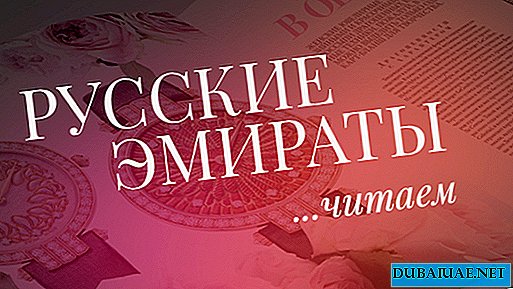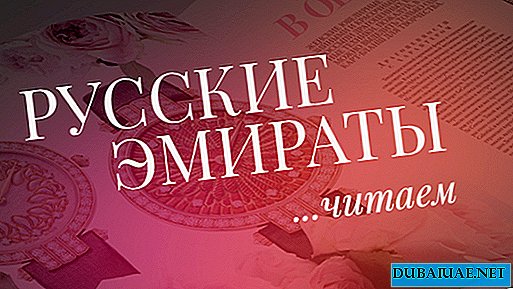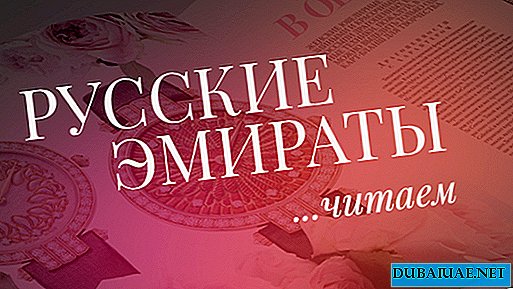Is it really necessary to look for the Himalayas,
to find such a talented Switzerland?Roerich N.K.
A traveler spoiled by the benefits of civilization, having traveled to different countries and famous resorts in search of a comfortable stay in the lap of unspoiled nature, is unlikely to find such a combination here.

It’s just another world, where dilapidated shacks huddle behind the high walls of luxury hotels. Where traffic at intersections is blocked by “sacred” cows dormant in the sun. Where the equipment is carried by a maid while hiking along mountain trails. Where people still live in the story that we call legends and myths.
There are more deities than people ...
There are more temples than houses
Going to the homeland of Siddhartha Gautama, world-famous under the name Buddha, I was surprised to learn that Nepal is the only Hindu kingdom in the world. But what about the foundations of the teachings of Buddhism? As it turned out, in this country both religions get along equally well, which are closely interwoven here into a single whole. Nepalese worship both Brahma, the first god of the Hindu trinity, and Buddha, as one of the incarnations of the Hindu god Vishna, and about 33 million gods and deities.
In the Kathmandu Valley in 1900, there were more than 2733 temples and Buddhist stupas, and this is not taking into account the private "home" shrines. Now their number has grown significantly. Local residents believe that the gods lived here among people, even before they ascended to the heights of the Himalayas in their monastery. This is not hard to believe, observing the natural beauties of the capital of Nepal from a picturesque hill, where the sacred tower has been rising for more than 2 thousand years mortar Swayambhunath. In another way, this sacred place is called the “Monkey Temple”, possibly because the numerous macaque families here feel at home, feeding themselves on tourist handouts and food sacrifices destined for sacred idols.

You have to be on your guard with these beggars - while you hold out a treat to one monkey, you will not notice how her "accomplice" will drag away your camera or some other small thing left unattended.
We walked around the stupa clockwise, spinning the drums with a mantra written in small handwriting ten million times inside Om Mani Padme Hum. The monks passed by, picking out the rosary, and the parishioners took a quick step, barely touching the turning prayers.
Counting 365 steps, going down the hill, turned out to be much easier than when climbing. Opening a second wind, our group rushed to another shrine - a living legend of Nepal.
It's hard to be a god
Or rather a living goddess, whom the Nepalese worship. She lives on the corner of Durbar Square, in a three-story palace-temple.

This little girl (Kumari) is the embodiment of the goddess Taleju from 3-4 years until the first appearance of blood - it does not matter whether it is a scratch or a natural physiological process. As soon as she sees the manifestation of these human qualities, the young girl goes "to retire," and a special commission selects a new goddess. Until that time, all her childhood was spent in prayers and education on the upper third floor of the palace, surrounded by clergy and teachers. A girl can’t even go down to the lower halls of the holy dwelling, to say nothing of games on the street - God forbid, the living goddess gets hurt or someone sees her without makeup. Nepalese and pilgrims have the opportunity to see it only in all its glory during religious holidays and celebrations of the royal family.
If someone was lucky enough to accidentally notice Kumari in the window, it is believed that he was lucky for life. We turned out to be unlucky and, after hearing the heartbreaking stories about the Virgin Goddess and the legends about its occurrence, we went to inspect the rest of the sights of Durbar Square, including the medieval palace of Nepalese kings, ancient temples and centuries-old pagodas of unusually skillful work of masters of the past. It is amazing how well they are preserved, despite the earthquakes and monsoon rains, these unique monuments of ancient architecture.
In gratitude to Boris Lissanevich
Not far from the palace square is the Tamel quarter, known to all tourists of Nepal, where the capital's guests flock for inexpensive jewelry, outlandish gizmos and souvenirs in the form of Hindu and Buddhist idols. For more exotic, unpretentious Europeans, lovers of extreme sports, stay here in local inns, in the so-called Guest Houses.



By evening, having examined all the shops, armed with a bag of various fragrant teas and a military knife of the famous Nepalese Gurkha warriors, our group finally decided to eat. Remembering the not-so-successful lunch experience in a local cheap cafe, this time we decided to have dinner at one of the most expensive restaurants by local standards. Where do you think we were offered to go? In the restaurant of Russian cuisine! True, there are only a few familiar dishes on the menu from the Russian, and the story of its founder, the dancer Boris Lissanevich, who in the fifties opened not only the first European hotel and restaurant in Nepal, but also the doors of tourism to this country.


A wonderful dinner in a pleasant atmosphere cost about $ 7 for each eater, which none of us regretted at all. After traveling through the poor neighborhoods, the unscrupulous enjoyment of luxury and gentlemanly laziness took hold of us. "Yes, still we are far from nirvana, if it is so difficult to renounce human weaknesses," some of us thought ....
“He doesn’t drown in water, doesn’t burn in fire,” Anaami Baba came up with a riddle, taking a morning bath in the sacred waters of the Ganges River.

It would seem that can attract at a funeral? At home, we usually try to avoid such sad events, unless, of course, they, God forbid, are not connected with loved ones. In Nepal, viewing the farewell ceremony is part of the tour program.
Why not? A unique opportunity to observe the cremation of corpses in the most ancient way. Moreover, no one expresses dissatisfaction - on the right bank of the Bagmati river a smoke is curling from the fire, and on the left there are local onlookers and tourists clicking on cameras. Nepalese guide explains the details of the ritual and complains about the high cost of the rite. Not every Hindu can afford enough wood for firewood and, sometimes, goes on his last journey along the sacred river, without having passed the necessary “purification” by fire. These stories are especially impressive when they see bathers splashing right there in the swift waters of Bagmati ....
The place where the Pashupatinath temple complex is located is unusually beautiful in itself - once on the green hills along the left bank of the river, God Shiva himself grazed cows. Now a series of small chapels stretches here with the sculptures of its lingam. To give honors to Shiva, pilgrims come not only from Nepal, but also from all over India.
We also paid tribute, at least to the builders of this temple, they were definitely masters of their craft. Although we were not able to watch it from the inside, they don’t let Gentiles into Hindu temples.

Yes, it didn’t hurt, I wanted to - the program included many more sights of the Kathmandu valley, which you must see with your own eyes, and there was so little time left. Ahead we had Tibet.
Back to the past. Era of communism
Nepal, as you know, is one of two bridges connecting the world with Tibet. The second, and most significant, is now China. You somehow don’t think about it, going to the country of the lost Shambhala. But we felt the influence of this pro-communist country already at the airport of Nepal, stepping in orderly rows aboard the Chinese Airlines. Border guards with gloomy faces “felt” us even on the take-off field, before climbing to the gangway.
During the flight, we completely forgot about these unpleasant procedures, enjoying the views of the tops of Everest above the clouds. It is good that, on the advice of our tour operator, we took seats on the left side, and we did not have to jump up and make our way to the portholes to admire the legendary beauties, as the whole right half of the plane did, which caused the car to roll quite noticeably on the left wing. Fortunately, the pilots were ready for such fluctuations of the aircraft, and we landed safely at the airport of Lhasa - the capital of Tibet.
At the exit from the airport, Tibetan guides greeted us with happy smiles, handed each a bottle of mineral water in our hands, tied white scarves on our necks and led us to waiting jeeps. And here we again felt the influence of China .... As it turned out, the guides trained in Nepal are not allowed to their direct duties in the country, and tours are conducted by insufficiently well-trained comrades under careful Chinese control. Perhaps we were just unlucky, but when we, spoiled by the all-knowing Nepalese guide, began to ask questions of interest to us, the Tibetan tour guide most often mumbled and “otmazyvatsya” weak English in his performance, which we also understood with difficulty.

On the way to the capital, we passed neat brick houses, over each of which the flag of China fluttered. As it turned out, such a manifestation of patriotism is associated with obligatory gratitude to the new government, which at half price built houses for Tibetan citizens. The introduction of modern Chinese civilization into the isolated world of Tibet was felt in everything - along smooth, spacious roads, observing all traffic rules, expensive cars go (for cycle rickshaws, relics of the past, special streets are reserved), and all of Lhasa looks like a clean little town saturated with the ideas of communism. By the way, posters with images of a sickle and a hammer were found even in remote settlements, which could only be accessed by receiving special permission each time. Apparently the prophecies mahatm ("those who have reached") still came true, and Buddhism merged with communism. Only now, it is hardly believed that this is the beginning of a "new era of powerful energies and opportunities" for Tibet, where religion was turned into tourist tinsel. Century-old culture and spirituality, compared to the neighboring Nepalese Himalayas, is expensive here, but no longer seems so valuable for the Chinese yuan.

Only mountains can be better than mountains
Having left the city, I finally want to breathe in the clean mountain air with a full chest .... Here you really understand the meaning of the expression "the air is intoxicating" - at an altitude of about 5000 meters above sea level it is so sparse that it makes you dizzy. We had to take oxygen cans with us on hikes, otherwise it would be difficult for us, unprepared foreigners, to climb even to the temples, which are located, as usual, on the top of the hill.

Therefore, the idea of changing jeeps to bicycles, as tourists-athletes from Europe do, or even yaks, as local residents, had to be abandoned. Maybe next time, after training in less high mountainous areas.
In the meantime, we enjoyed the amazing views of green-red-yellow landscapes floating outside the windows of cars against the backdrop of white peaks ....

For a more complete acquaintance with the unique Tibetan nature, we decided to try to go, or rather swim, in a different way. Down the river - cold, bubbling and winding. On a rubber boat, accompanied by professional rescuers, we maneuvered between boulders, overcame rapids, and water covered us with our heads. Landscapes flashed past, as if coming out from under Roerich’s brush: a small village with stone houses, horses on a pasture, a couple of yaks, a white small stupa on a hill, the ruins of old temples, and not a soul around.
Here, far from the cities, the spirit of majestic Tibet is still alive, stones preserve history, lakes are legends, and time stands still. Probably, it is precisely in these places that all travelers are so attracted: it is so good and easy to just sit there and be silent about your ...
Irina Ivanova









